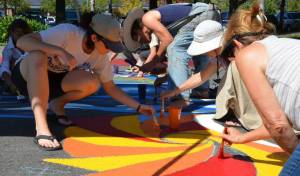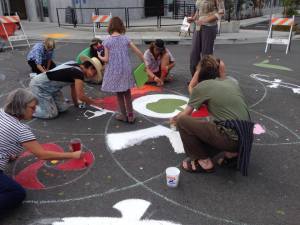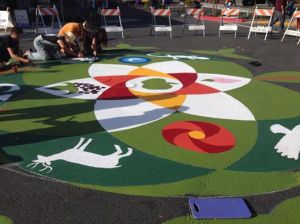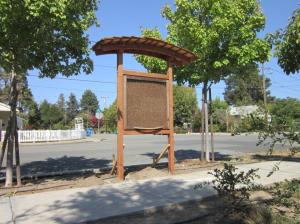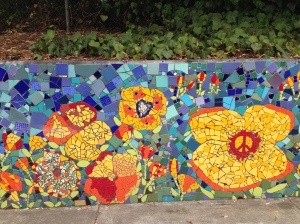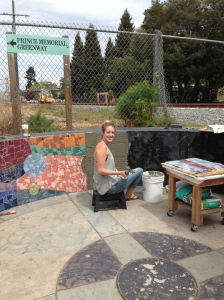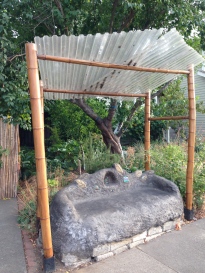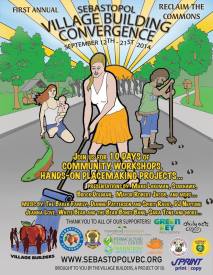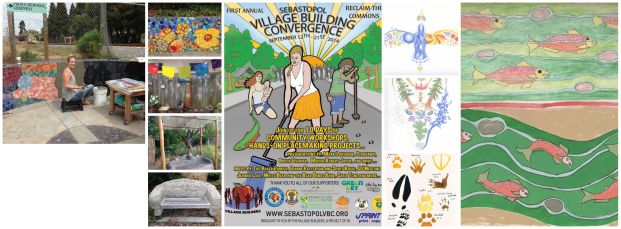The Heart of Homelessness, Creative Programs and Upcoming Events
Seen and Heard, Visual Histories of Homelessness in Sonoma County Debut Art Exhibit and Documentary June 19, 2015 and ongoing.
I came to this project as a volunt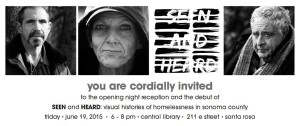 eer artist and facilitator. What unfolded has been a poignant journey of collective resilience and the healing power of art. Come join the celebration of the artists via a traveling art exhibit that extends for the next month at the central library 211 E. Street Santa Rosa. The exhibit will then move to the Sebastopol library and to each Sonoma county library in turn month by month. A documentary of interviews of homeless and transitionally housed participants in Seen and Heard will be made available as well.
eer artist and facilitator. What unfolded has been a poignant journey of collective resilience and the healing power of art. Come join the celebration of the artists via a traveling art exhibit that extends for the next month at the central library 211 E. Street Santa Rosa. The exhibit will then move to the Sebastopol library and to each Sonoma county library in turn month by month. A documentary of interviews of homeless and transitionally housed participants in Seen and Heard will be made available as well.
Conception of “Seen and Heard, Visual Histories of Homeless in Sonoma County”
As the brainchild of Rebecca Forth, Assistant to the Director for the Sonoma County Library, the project was designed to create a safe, warm and dry place during the winter months for homeless and transitionally housed people to do art. Rebecca received a grant from the California State Library and IMLS for the project that also included a video documentary component and an art exhibit. Participants could “drop in” on Mondays from 1:30-5PM at the library and were provided the art supplies and encouragement within the context of Person-Centered Expressive Arts and primarily facilitated by Person-Centered Expressive Arts Therapist and Teacher, Shellee Davis. Richard Stilwell, worked with those willing to be interviewed and filmed about their experiences of being homeless at the end of each art session. The library which is normally closed to the public on Mondays (since funding cuts) was available to the homeless and transitionally housed for the duration of the project. The project’s art component continued through May 18, 2015 though the initial timeline and grant funding was for December through February. The goal of the project was to create a video documentary of the homeless experience and have an exhibit of some of the art created during the weekly sessions. The purpose was to help bring added awareness to civil leaders and the community about the personal experiences of the homeless in Sonoma County. Bread for the Journey and Sonoma County Library Foundation also graciously supported this goal with a grant towards funding for the video and art presentation. .
Stealing, a Homeless Outcry
Normally I leave my shoes on the front porch and then slip them on to go in the garden or out for the day. Last October my shoes were gone. I was disoriented, thinking maybe I left them by another door. My search confirmed my shoes were nowhere to be found. I was creeped out. My skin was tingly with that “crawling” sensation as I realized a thief had been right outside my front door. I began thinking about who would take my shoes and slowly. I decided it must have been someone who needed them. Somehow, the thought of a homeless person with worn out or no shoes absconding with mine, took the discomfort of feeling violated down quite a few notches. Still, my two favorite pairs of shoes were gone; my well worn flip flops and Keens were on someone else’s feet. These were the same shoes I wore on my pilgrimage in Nepal and Bhutan, traipsing the mountains to sacred sites and circumambulating stupas into the night. I can afford a new pair of shoes. I have the fortune of a place to call home and the ability to travel. So, a prayer to you fellow traveler, may you have freedom and may my “comfy old favorites” lead you home.
What began grabbing my attention more profoundly than a thief at the door was the increasing amount of homeless people walking down my street, coming up from the creek bed at the end of the block or walking in the neighborhood park and graveyard. Elderly neighbors began telling me of their fear and the recent “run ins” they had with homeless people. One woman talked of befriending a homeless man sleeping on the creek bank next to her home. “He was always respectful and greeted my dog lovingly every morning. Somehow it made me feel safe knowing he was outside my home. One day he was badly beaten up. I tried to help him. After that day, I never saw him again . Now I hear homeless people arguing. They are drinking and loud. I am afraid. I am losing my eyesight. It is hard to protect myself. I wish I knew if the homeless man I liked was okay.”
I read on the Nextdoor platform about JC neighbors finding strangers sleeping on their porch or driveways and behind their houses in the alleys. It was easy to notice the sleepers, beside the creek(s) and on the cement under lamplight. Now I see the many more homeless who walk through the night with the bedrolls on their backs. The men and women and teens who believe they need to stay awake to keep safe. The ones who “keep walking” because there is no safe place to rest.
Frankly, I find the escalation of homelessness in Sonoma County to be alarming. It’s shocking to learn that from 2009-2013 the Sonoma County homeless youth population grew 450%. According to SAY, this is the highest per capita rate in the nation. Statistics are not out for 2014-15 but from what I see, the word on the street and coming from social service workers, the growth in the homeless population has rapidly continued to rise. There are elderly woman in their eighties and newborn infants homeless. It’s not simply the stereotypical “meth head” or “drunken bum.” There are diverse personal stories of homelessness, and these stories do not fit in the boundaries of stereotypes. They are stories worth listening to, people worth tending to.
Housing First, A Safe Place Essential For Healing
I’ve known for years that many homeless face mental health challenges, physical disabilities and addictions or the need to remove themselves from dysfunctional situations at all costs. Members of my family have been mentally ill and chronically homeless. As a young teen, I chose the unknowns of homelessness over life at “home.” I understand that some family systems and gaps in our care facilities and social service structure are problematic. Yet how do we support proper care for homeless individuals, especially those in life threatening situations and with mental health challenges, when housing is the first priority to begin the healing process?
Housing First is not a new concept. There are successful examples of this focus in Utah, Oregon and Washington as well as California. I especially like the story of River Haven Community in Ventura County, California. It is one great example of a homeless tent community. I like it for several reasons: the land was donated for the purpose of serving the homeless, the community supported the project and the tent community is self sustaining. River Haven Community is located on land that had been owned by the coastal commission. It was donated a year after heavy floods killed homeless people living along the river of a coastal state park. Turning Point Foundation became the overseeing non profit organization for River Haven Community and continues to support a variety of services for the homeless and addresses the critical community support needs of mentally ill adults.
To be a resident of River Haven Community a person must commit to refrain from active addiction and violence and participate in peer support and social skill building. The Clinical Director, Corliss Porter explained that reparation of parts of the brain diminished by trauma and PTSD and often severely exacerberated by the traumas of homelessness is not only possible but essential. She said under severe stress the amygdala can shrink to the size of a pea rather than being the natural size of a walnut. This in turn leads to there being no regulator to the prefrontal cortex which effects decision making for starters. When stimuli cannot be effectively processed internally, a person needs to retract from the environment and they can become paranoid and further de-socialized out of self preservation. This in an extreme is exemplified in the Veteran who cannot imagine staying indoors or the woman in a catatonic state sitting in a park. Facilitating change without shame is required and practicing compassion is a basis for this. Studies have shown that the amygdala can regrow under these conditions. To help accomplish this there is a full time case manager on site at the River Haven Community and peer mediation training is required for all the residents. Care in developing a program that offers participants a working knowledge of healthy, life affirming social skills has been integral in the success of Turning Point Foundations work. Stay tuned for more on Housing First in Sonoma County.
Pivotal Homeless Service Facilities In Sonoma County
The Sonoma County Task Force publishes a homeless resource guide in both English and Spanish. This guide spells out the range of organizations that are working for solutions to the homeless epidemic and how to contact these service providers. One of these agencies, Catholic Charities is viewed as the starting point, the “first point of contact” for homeless services in Sonoma County. They feed, house and clothe individuals and families and have been doing so for years. They are a separate entity from the Catholic Church and therefore are funded independently as well. Their headquarters for the homeless is 600 Morgan Street in downtown Santa Rosa with the family emergency shelter around the corner.
COTS is known as a premiere example of multi level support for the homeless in Sonoma County. The services they provide include: housing for families and single adults, transformative programs and homeless prevention. Join in a ribbon cutting ceremony for the COTS Family Shelter in Petaluma June 27 from 10-11:30 1500 Petaluma Blvd S., Petaluma.
An upcoming landmark accomplishment for Sonoma County homeless youth will be the SAY Dream Center opening it’s doors. Slated to open this winter, the Dream Center “includes 63 units of housing for homeless 18-24 year olds, along with counseling and job training, both for the residents and another 1000 young people using SAY’s effective counseling and job training services”. The Ceres Project is partnering with SAY and will build a commercial kitchen facility at the Dream Center, establishing a Ceres Project site. The collaboration will include opening a cafe, providing vocational and teen leadership skills to the SAY youth and community volunteers while providing whole foods education and delicious meals. At least one acre of the Dream Center hardscape will be converted to an organic garden. The County has provided a $1 million operating grant once the facility is complete.
There are long waiting lists for all the shelters in Sonoma County. In the winter additional shelters in Guerneville and programs like the Nomadic Shelter and Safe Parking exist. Homelessness is not a seasonal concern. There are thousands without shelter each night of the year even with the existence of places like Catholic Charities and COTS . This doesn’t diminish the strides that SAY has made in developing SAY Dream Center or other successes like re opening of the COTS Family Shelter. It simply shows the epidemic nature of homelessness in Sonoma County and the need for a more lasting remedy.
Stellar Day Services
For the last 21 years the Living Room has been offering day services to homeless woman and children. It is currently the only program offering day services specifically for women in Sonoma County. “Sadly, due to the increase of homeless women and children in our community, we’ve seriously outgrown our space and need a new home.” They are expanding to a new location in the fall and need support in renovating their new home. Being a pioneer organization they continue to be innovative as well as practical in their approach and services offered. In fact, the Living Room was the first homeless organization to add expressive arts to their art therapy offerings and did so when they hired Shellee Davis in June of 2014. They are extremely concerned about the serious depression rampant within the homeless community today and are actively adapting and developing compassionate programs to address this concern.
SAY offers the Dr. Coffee Teen Shelter, which is open 24 hours a day, providing respite for families in crisis and family reunification services for runaway and homeless youth and their families. The program includes: short-term shelter, food, counseling, and referrals for youth and their families. You can RSVP for a tour of the facility on June 16, 2015 from 12-1PM here.
The Wellness and Advocacy Center and it’s partner organization Interlink provide “drop” in services “to support community members living with mental health challenges to develop and sustain well being through self empowerment”. Though not specifically a homeless service organization, the Wellness and Advocacy Center works with many homeless individuals offering programs in art, career and computer labs, a community garden, cooking classes and a peer counseling program.
The Art Director for the Wellness and Advocacy Center, Naomi Murakami, supports artists wholeheartedly. An artist herself, Naomi’s approach for the Art Program is to focus on “process not on final product”. This is a foundational element of the whole person-centered approach of expressive arts therapy though Naomi is adamant she is not doing therapy but rather providing a safe place for artists, “to do their art”. Though not focused on the “product”, Naomi did present an exhibit of participants artwork at the Finley Center early this year. The exhibit included a majority of homeless artists’ pieces. She continues to promote Wellness artists by showing their work and/or selling it. She says “our most popular items are digital archival reproductions”. For our digital print out items 50% goes to the artist. The center only keeps the rest to cover the cost of materials and production. For a homeless person faced with mental health challenges this program is proactive and a peer support oriented resource.
Affordable Housing Affects Our Whole Community
It’s no secret that as our economy tumbled, affordable housing took a huge hit. Many hardworking people became laid off when companies downsized or dissolved. Others experienced life threatening illness or the death of a loved one. In multiple cases it wasn’t just that the balloon popped, it was their life savings disappeared with pension fund scandals and mortgage backed securities tanking. Negligence has rarely been the culprit when people earnestly seek loan modification or try to cure loan default through a short sale. Sometimes foreclosure is the final outcome of a long battle for homeowners fighting to stay in their home. This isn’t in the headlines anymore but the fallout will be felt for sometime. All those homeowners who lost their homes still need a place to live. If they didn’t move out of the county they most likely became tenants or possibly homeless.
Houses sold at auction or as a short sale often became another person’s good fortune and possibly new business venture. Rentals are getting a premium. If you are an investor, buying homes for “flipping” or simply accruing rentals continues to bring excellent return on the dollar. With 1% vacancy in Sonoma County, landlords can command a premium for their properties. In some cases potential tenants have “overbid” on a rental to obtain the lease. I heard of one situation where a renter’s lease was broken so that a landlord could accept a 500$ additional monthly payment from an assertive lessee. There just aren’t enough rentals to meet the needs of our community.
It has become very difficult for many laborers, workers in the county, to afford rents. For many households multiple incomes are necessary to support the rent payments. I hear friends, vital members of the community who contribute in exceptional ways, speak of being hard pressed to find quality affordable housing. This makes those on HUD subsidy even less likely to find housing. Many homeless have to wait five years just to get a voucher and once they have a voucher lose it because they cannot find a rental that the voucher will cover. A recent article in the Press Democrat said according to a survey by Carolyn Epple, up to 90% of landlords advertising rentals would not take a HUD voucher. It becomes a vicious cycle for the homeless trying to get back on their feet. They experience more and more trauma while on the streets and become debilitated by the setbacks they face while they wait for affordable housing.
There is no singular solution for the homeless crisis. Collaboration and “out of the box” solutions are called for. There are organizations and successful projects nationwide worth emulating. There are mavericks in our county making great strides and reason to celebrate these landmarks. We know homelessness is a complex social issue, devastating to the already isolated members of our community. It is my experience that listening to the heart of the homeless inspires healing. Networking and collaborating with each other can effect solutions for curtailing the homeless epidemic. Lets get creative. Everyone in our community matters. Everyone deserves a safe place to be.
